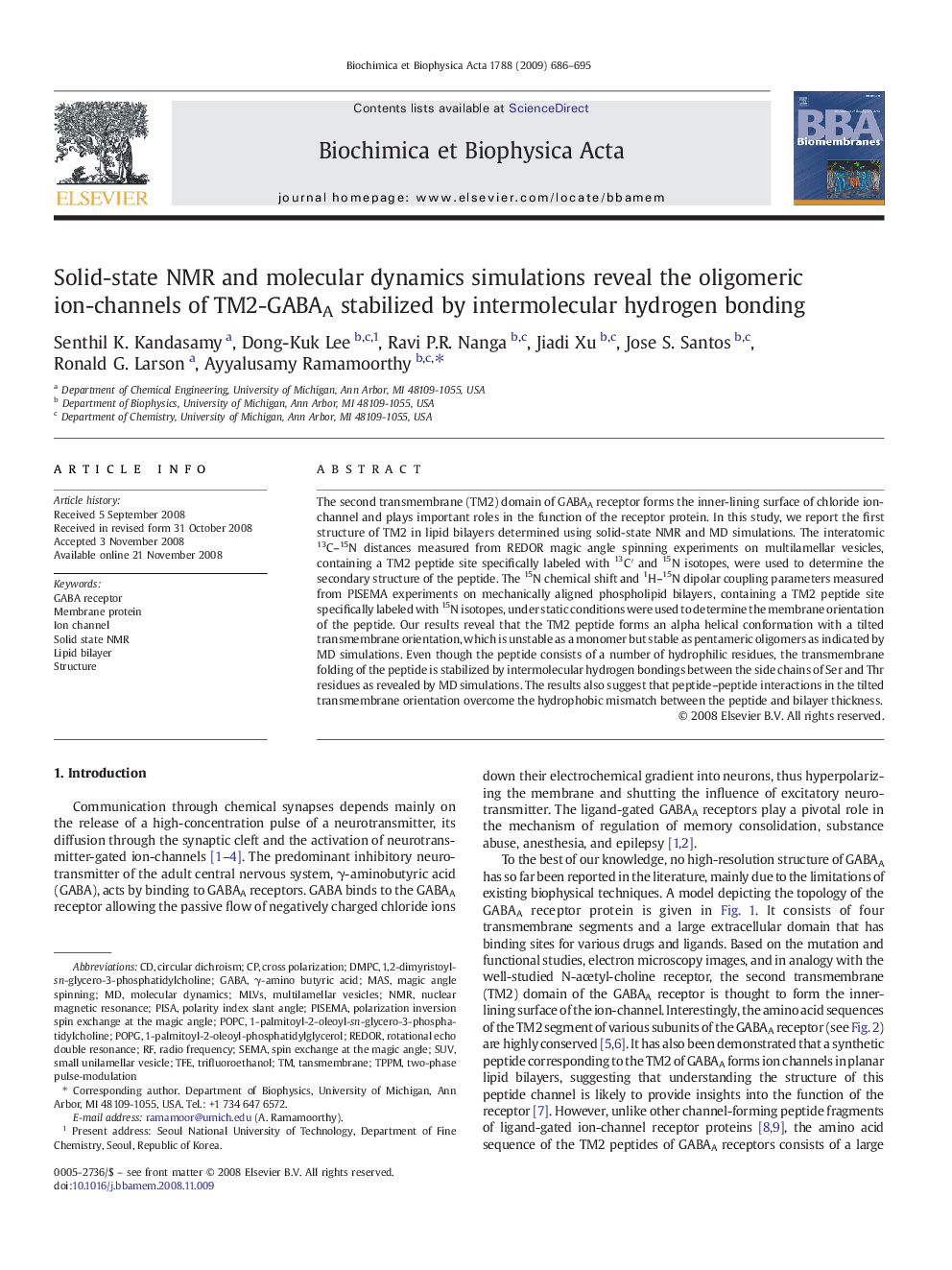| Article ID | Journal | Published Year | Pages | File Type |
|---|---|---|---|---|
| 1945233 | Biochimica et Biophysica Acta (BBA) - Biomembranes | 2009 | 10 Pages |
The second transmembrane (TM2) domain of GABAA receptor forms the inner-lining surface of chloride ion-channel and plays important roles in the function of the receptor protein. In this study, we report the first structure of TM2 in lipid bilayers determined using solid-state NMR and MD simulations. The interatomic 13C–15N distances measured from REDOR magic angle spinning experiments on multilamellar vesicles, containing a TM2 peptide site specifically labeled with 13C′ and 15N isotopes, were used to determine the secondary structure of the peptide. The 15N chemical shift and 1H–15N dipolar coupling parameters measured from PISEMA experiments on mechanically aligned phospholipid bilayers, containing a TM2 peptide site specifically labeled with 15N isotopes, under static conditions were used to determine the membrane orientation of the peptide. Our results reveal that the TM2 peptide forms an alpha helical conformation with a tilted transmembrane orientation, which is unstable as a monomer but stable as pentameric oligomers as indicated by MD simulations. Even though the peptide consists of a number of hydrophilic residues, the transmembrane folding of the peptide is stabilized by intermolecular hydrogen bondings between the side chains of Ser and Thr residues as revealed by MD simulations. The results also suggest that peptide–peptide interactions in the tilted transmembrane orientation overcome the hydrophobic mismatch between the peptide and bilayer thickness.
